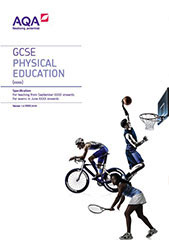Bones
|
Identification of the bones at the following locations:
- head/neck
– cranium and vertebrae
- shoulder – scapula and humerus
- chest
– ribs and sternum
- elbow – humerus, radius and ulna
- hip
– pelvis and femur
- knee – femur and tibia (students should also know that the patella sits in front of the knee joint)
- ankle – tibia, fibula and talus.
|
Structure of the skeleton
|
How the skeletal system provides a framework for movement (in conjunction with the muscular system):
- the skeletal system allows movement at a joint
- the shape and type of the bones determine the amount of movement (short bones
enable finer controlled movements/long bones enable gross
movement)
- flat
bones for protection of vital organs
- the different joint types allow different types of movement
- the skeleton provides a point of attachment for muscles – when muscles contract
they pull the bone.
|
Functions of the skeleton
|
- support
- protection of
vital organs by flat bones
- movement
- structural
shape
and
points for attachment
- mineral storage
- blood cell production.
Functions
should be applied to performance in physical
activity.
|
Muscles of the body
|
Identification of the following muscles within the body:
- latissimus dorsi
- deltoid
- rotator cuffs
- pectorals
- biceps
- triceps
- abdominals
- hip
flexors
- gluteals
- hamstring group (not individual names)
- quadriceps group (not individual names)
- gastrocnemius
- tibialis anterior.
Students
should be taught the role of tendons (attaching muscle to
bones).
|
Structure of a synovial joint
|
Identification of the following structures of a synovial joint and how they help to prevent injury:
- synovial membrane
- synovial fluid
- joint capsule
- bursae
- cartilage
- ligaments.
|
Types of freely movable joints that allow different movements
|
Identification of the types of joints with reference to the following:
- elbow, knee and ankle – hinge joint
- hip
and shoulder – ball and socket.
|
How joints differ in design to allow certain types of movement at a joint
|
Understand that the following types of movement are linked to the appropriate joint type, which enables that movement to take place:
- flexion/extension at the shoulder,
elbow,
hip and knee
- abduction/adduction at the shoulder
- rotation of the shoulder
- circumduction of the shoulder
- plantar flexion/dorsiflexion at the ankle.
Application to specific sporting actions is in movement analysis.
|
How the major muscles and muscle groups of the body work antagonistically on the
major joints of the skeleton to affect movement in physical activity
at the major movable joints
|
With reference to the shoulder, elbow,
hip,
knee and ankle joints:
- major muscle groups operating at these joints (see above)
- the action of prime movers (agonists)/antagonists
- bones located at the joint (see above)
- how these muscle groups work isometrically and isotonically (concentric/eccentric).
The difference between concentric and eccentric (isotonic) contractions.
|
